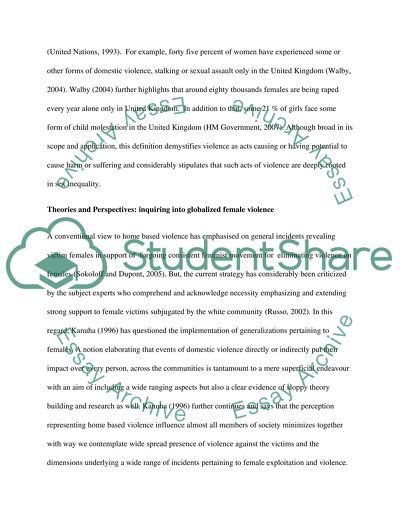Cite this document
(“Literature Review: Domestic Violence on Women Essay”, n.d.)
Retrieved from https://studentshare.org/sociology/1397199-literature-review
Retrieved from https://studentshare.org/sociology/1397199-literature-review
(Literature Review: Domestic Violence on Women Essay)
https://studentshare.org/sociology/1397199-literature-review.
https://studentshare.org/sociology/1397199-literature-review.
“Literature Review: Domestic Violence on Women Essay”, n.d. https://studentshare.org/sociology/1397199-literature-review.


